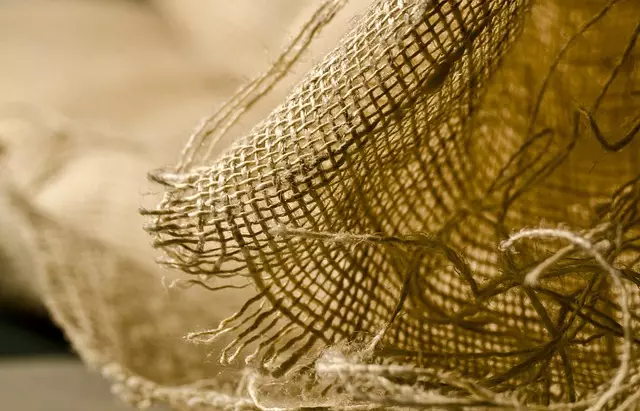Yellow Vietnam Kratom, a specific strain of Mitragyna speciosa, stands out due to its unique alkaloid profile rich in mitraphylline and 7-hydroxymitragynine. It is recognized for its potential to help with muscle soreness by interacting with opioid receptors, providing pain relief without the sedative effects often associated with other kratom strains. This strain's balanced and energizing properties make it a popular choice among those who lead active lifestyles and seek to manage pain naturally. Preliminary reports and ongoing research suggest that Yellow Vietnam Kratom could present a distinct approach to pain management compared to traditional medications, though individual responses can vary significantly based on personal biochemistry. It is crucial for users to be cautious with dosage and aware of the legal status of kratom in their region. A clear understanding of its effects and proper use, as well as professional medical guidance, is essential before incorporating Yellow Vietnam Kratom into any health regimen, especially considering the variability in alkaloid content between batches. What is Yellow Vietnam Kratom is a question that points to a natural product with potential benefits for muscle soreness and mood elevation, but its use should always be approached with mindfulness and respect for individual health considerations.
Embark on a journey into the natural realm of pain management with our exploration of Yellow Vietnam Kratom, a botanical remedy revered for its potential to alleviate muscle soreness. As we delve into the intricate effects of this Southeast Asian staple, uncover how it can be seamlessly woven into your daily routine for optimal relief. Discover the transformative benefits of Yellow Vietnam Kratom and learn to harness its therapeutic properties effectively, all without the need for synthetic alternatives. Join us as we illuminate the path to natural comfort and well-being.
- Unraveling the Effects of Yellow Vietnam Kratom on Muscle Soreness
- A Comprehensive Guide to Integrating Yellow Vietnam Kratom into Your Muscle Soreness Relief Routine
Unraveling the Effects of Yellow Vietnam Kratom on Muscle Soreness

Yellow Vietnam Kratom, a variant of the Mitragyna speciosa plant, has garnered attention for its potential effects on muscle soreness. This particular strain is distinguished by its unique alkaloid profile, which includes mitraphylline and 7-hydroxymitragynine, among others. These compounds are believed to interact with the body’s opioid receptors, which may contribute to its analgesic properties. Users often report that Yellow Vietnam Kratom helps alleviate muscle discomfort and aches, possibly due to these interactions. The strain is also praised for its balanced and invigorating effects, making it a preferred choice for those seeking relief from soreness without the sedative effects sometimes associated with other kratom strains.
Research into the efficacy of Yellow Vietnam Kratom for muscle soreness is ongoing, with anecdotal evidence supporting its use. It’s thought that the strain’s unique alkaloid composition may offer a distinct pain-relieving experience compared to traditional kratom or other forms of analgesia. Those who engage in physical activities, particularly those that lead to muscle fatigue and soreness, might find Yellow Vietnam Kratom particularly beneficial. However, it’s crucial for individuals to approach the use of any kratom product with caution, adhering to appropriate dosage guidelines and consulting with healthcare professionals to ensure safety and efficacy, especially given the varying regulatory statuses of kratom in different regions. Understanding the nuances of how Yellow Vietnam Kratom affects each individual is essential, as personal biochemistry can influence the response to this natural compound.
A Comprehensive Guide to Integrating Yellow Vietnam Kratom into Your Muscle Soreness Relief Routine

Yellow Vietnam Kratom has garnered attention in various wellness routines, particularly for those seeking muscle soreness relief. This particular strain is known for its unique alkaloid profile, which may contribute to its pain-relieving and mood-enhancing effects. When incorporating Yellow Vietnam Kratom into your routine for muscle soreness, it’s crucial to understand the proper dosage and integration methods.
To effectively use Yellow Vietnam Kratom, start by determining the right dosage for your body. The alkaloid content can vary between batches, so it’s essential to begin with a lower dose and gradually increase as needed, while also monitoring your response. Typically, a moderate dose of Yellow Vietnam Kratom can be administered orally, either by consuming the leaves directly or by encapsulating them. For those who prefer not to consume the leaf itself, powdered forms are available. The onset of effects may vary; however, many users report feeling the benefits within 20 to 45 minutes after ingestion. It’s important to maintain a consistent intake schedule for optimal results, as intermittent use may yield inconsistent relief. Additionally, combining Yellow Vietnam Kratom with rest, proper hydration, and nutrition can enhance its effects on muscle soreness. Always consult with a healthcare professional before integrating any new supplement into your health regimen to ensure it aligns with your personal health considerations.
Yellow Vietnam kratom has garnered attention within the realm of natural remedies for muscle soreness, offering a potential alternative for those seeking relief. This article has delved into the effects of this specific strain and provided guidance on how to incorporate it into a routine effectively. While more research is warranted to fully understand its mechanisms and optimal use, Yellow Vietnam kratom presents an intriguing option for individuals experiencing discomfort. As with any supplement, it’s advisable to consult healthcare professionals before integrating it into your health regimen. With careful consideration and professional advice, Yellow Vietnam kratom may serve as a valuable addition to your wellness practices for alleviating muscle soreness.






